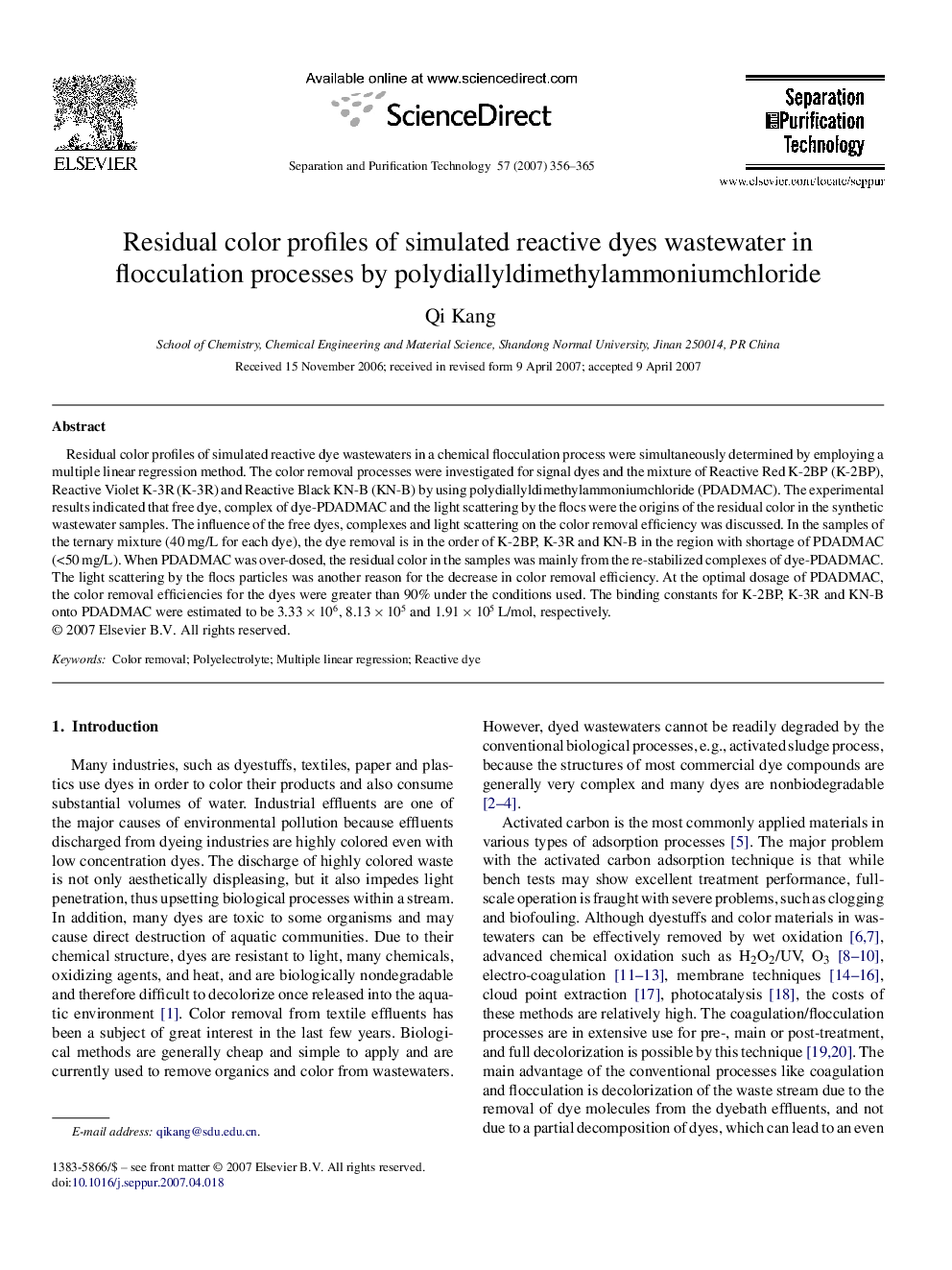| Article ID | Journal | Published Year | Pages | File Type |
|---|---|---|---|---|
| 644154 | Separation and Purification Technology | 2007 | 10 Pages |
Residual color profiles of simulated reactive dye wastewaters in a chemical flocculation process were simultaneously determined by employing a multiple linear regression method. The color removal processes were investigated for signal dyes and the mixture of Reactive Red K-2BP (K-2BP), Reactive Violet K-3R (K-3R) and Reactive Black KN-B (KN-B) by using polydiallyldimethylammoniumchloride (PDADMAC). The experimental results indicated that free dye, complex of dye-PDADMAC and the light scattering by the flocs were the origins of the residual color in the synthetic wastewater samples. The influence of the free dyes, complexes and light scattering on the color removal efficiency was discussed. In the samples of the ternary mixture (40 mg/L for each dye), the dye removal is in the order of K-2BP, K-3R and KN-B in the region with shortage of PDADMAC (<50 mg/L). When PDADMAC was over-dosed, the residual color in the samples was mainly from the re-stabilized complexes of dye-PDADMAC. The light scattering by the flocs particles was another reason for the decrease in color removal efficiency. At the optimal dosage of PDADMAC, the color removal efficiencies for the dyes were greater than 90% under the conditions used. The binding constants for K-2BP, K-3R and KN-B onto PDADMAC were estimated to be 3.33 × 106, 8.13 × 105 and 1.91 × 105 L/mol, respectively.
